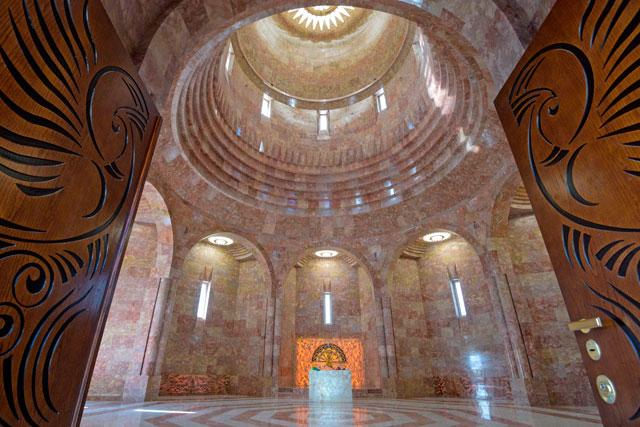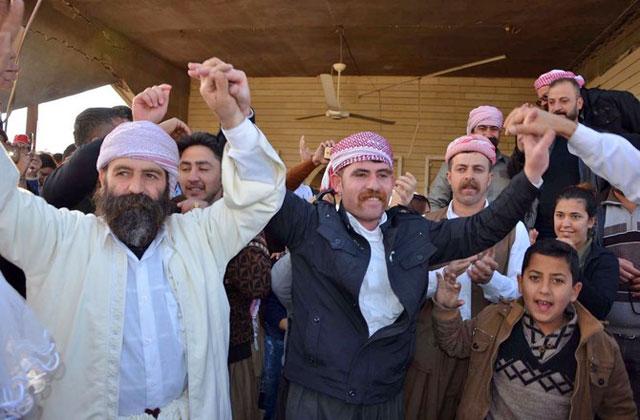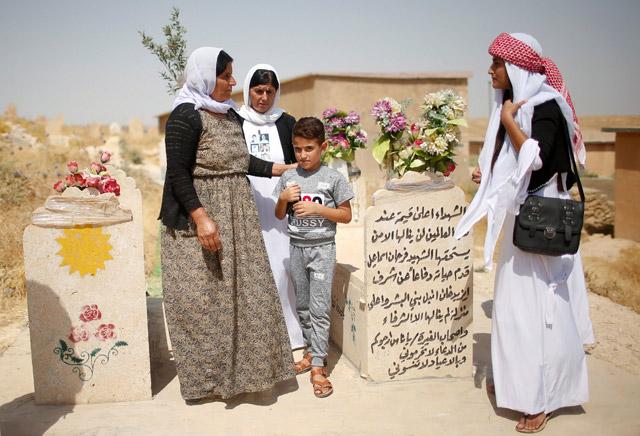You are here
Long-persecuted Yazidis welcome new ‘sanctuary’ temple
By AFP - Oct 21,2019 - Last updated at Oct 21,2019

A view of the interior of the new Yazidi Temple in the village of Aknalich, 35 kilometres from the Armenian capital Yerevan, on October 11 (AFP photo)
AKNALICH, Armenia — Yazidis, an ancient ethnic group much persecuted for their faith, now have a massive new temple in Armenia to help preserve their religion and identity.
The Yazidi community, which has suffered greatly in recent upheavals in the Middle East, has found a safe haven in the former Soviet Caucasus country.
And now they have built a gleaming white temple there surrounded by a rose garden, which is already attracting pilgrims from abroad.
The new temple stands 35 kilometres from the Armenian capital Yerevan, in the village of Aknalich, where 150 of the residents are Yazidi.
Built from milky-white Persian marble and polished granite, the 25-metre-high structure includes a large prayer hall, a religious school and museum.
Its construction was partly funded by a wealthy Moscow-based Yazidi businessman Mirza Sloyan, who was born nearby.
The new temple is intended as a symbol of strength for the Kurdish-speaking religious minority group, as the community tries to preserve its unique faith.
“Over the centuries, our ancestors have known much sorrow and pogroms,” said 62-year-old Tosun Avdalyan, who had come from Russia to pray in the new temple.
“This temple will help our people to preserve, cherish and protect our national awareness and religion,” he added.
“After having seen so many atrocities, we now have a new sanctuary and feel stronger, united,” said another worshipper, 31-year-old Aram Usubov.
Persecution
Yazidis worship one God, who they believe created the world and entrusted it to seven Holy Beings, the most important of which is Melek Taus, or the Peacock Angel.
The temple’s seven domes topped with sun symbols represent the seven angels revered by the Yazidis, adherents of an ancient religion rooted in Zoroastrianism.
Worshippers remove their shoes before entering and kiss the walls around the entrance. The inside is dominated by the holy symbol of the peacock.
At the altar, they pray and tie knots in pieces of cloth that represent their wishes. Outside, a stall sells souvenirs in the shape of peacocks.
Their beliefs and practices of the Yazidis include a ban on eating lettuce and wearing the colour blue.
And while the 35,000 Yazidi community in Armenia can freely practise their religion, elsewhere they have suffered greatly.
Yazidis also live in Syria, Turkey — and Iraq, which has the largest community, numbering 1.5 million.
The terrorists seized their bastion Sinjar in north-western Iraq, killing thousands of Yazidis then abducting and enslaving women and girls.
They suffered crimes that the United Nations has described as genocide and Armenia’s parliament has formally recognised as genocide.
Last year, Yazidi activist Nadia Murad, who was held prisoner by Daesh was joint winner of the Nobel Peace Prize for her activism against violence.
By Karen Minasyan
Related Articles
BAGHDAD — The Daesh group especially targeted the Yazidi minority when it seized control of large parts of Iraq in 2014, massacring its men
BASHIQA, Iraq — Northern Iraq's Yazidi community that suffered so terribly under the Daesh terror group persecution celebrated on Friday as
SINJAR, Iraq — Iraq's Yazidis marked three years since the Daesh terror group launched what the United Nations said was a genocidal campaign














